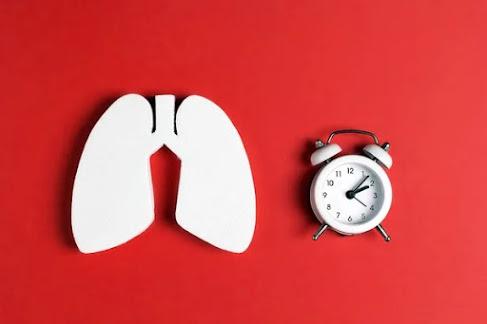Pulmonary Arterial Hypertension (PAH) is not just high blood pressure—it’s a complex cardiovascular condition that affects the arteries in your lungs, putting a strain on your heart over time. People living with PAH often experience symptoms like fatigue, dizziness, and shortness of breath, which can severely impact daily life.
Though the condition is serious, advancements in treatment options offer new hope. Whether through medications, lifestyle adjustments, or advanced therapies, managing PAH is possible with the right support and knowledge. This blog will cover everything from early symptoms to the most effective treatments, helping you or a loved one take proactive steps toward better heart health.
What Is Pulmonary Arterial Hypertension?
In PAH, the small arteries in the lungs become narrowed or blocked, making it harder for blood to flow through. As a result, the heart works harder to pump blood, weakening the heart muscle and reducing its ability to pump effectively.
PAH is different from general pulmonary hypertension, which can result from heart or lung diseases. In PAH, the issue originates primarily in the arteries themselves.

Symptoms to Watch For
Symptoms often develop gradually and may initially be mistaken for other conditions. Common signs include:
- Shortness of breath during everyday activities
- Fatigue or weakness
- Chest pain or pressure
- Swelling in the ankles, legs, or abdomen
- Rapid heartbeat (palpitations)
- Fainting or dizziness
What Causes PAH?
PAH can be idiopathic (with no known cause) or result from various factors, including:
- Genetic mutations (heritable PAH)
- Connective tissue diseases (like scleroderma or lupus)
- Congenital heart defects
- Chronic liver disease (portal hypertension)
- Certain medications or drug use (such as appetite suppressants)
- HIV infection
Diagnosis: How Is PAH Detected?
Diagnosing PAH involves a combination of tests, such as:
- Echocardiogram – Measures heart function and pressure
- Right heart catheterization – Confirms diagnosis and measures pressure in the pulmonary arteries
- Pulmonary function tests – Checks lung health
- Blood tests – Identifies underlying causes
Early diagnosis is critical in managing the disease and preventing further damage to the heart and lungs.

Treatment Options
While there’s no cure for PAH, several treatments help manage symptoms and slow disease progression:
-
Medications
Medications for Pulmonary Arterial Hypertension (PAH) are designed to lower blood pressure in the lungs, improve exercise capacity, and slow the progression of the disease. Here are some common classes of heart health medications used for PAH treatment:
-
Endothelin Receptor Antagonists (ERAs):
- Examples: Ambrisentan, Bosentan, Macitentan
- How they work: Block the effects of endothelin, a substance that narrows blood vessels, helping to improve blood flow and reduce pressure.
-
Phosphodiesterase-5 Inhibitors (PDE5 Inhibitors):
- Examples: Sildenafil, Tadalafil
- How they work: Help relax the blood vessels in the lungs, reducing pressure and improving exercise ability.
-
Prostacyclin Analogues and Receptor Agonists:
- Examples: Epoprostenol, Treprostinil, Selexipag
- How they work: Mimic prostacyclin, a natural substance that widens blood vessels and prevents blood clots.
-
Soluble Guanylate Cyclase (sGC) Stimulators:
- Example: Riociguat
- How they work: Enhance nitric oxide effects, leading to vessel relaxation and reduced lung pressure.
-
Calcium Channel Blockers: (For select patients)
- Examples: Amlodipine, Nifedipine
- How they work: Relax the muscles in the blood vessel walls, easing blood flow.
-
Anticoagulants: (In certain cases)
- Examples: Warfarin
- How they work: Prevent blood clots that can worsen PAH symptoms.
Each treatment plan is personalized based on the severity of PAH, underlying conditions, and patient response. Always consult a healthcare provider for the most suitable medication options.
-
Oxygen Therapy
- Helps maintain proper oxygen levels, especially during exercise or sleep
-
Lifestyle Changes
- Regular, low-impact exercise
- Healthy diet and weight management
- Avoiding smoking and alcohol
-
Surgical Procedures (for severe cases)
- Atrial septostomy (creates an opening between heart chambers)
- Lung or heart-lung transplantation
Living With PAH
Living with Pulmonary Arterial Hypertension (PAH) can be challenging, but with proper management, many people lead fulfilling lives. Regular medical check-ups, taking prescribed medications, and following lifestyle changes are essential to control symptoms and slow disease progression. Light physical activity, a heart-healthy diet, and avoiding high-altitude areas can help improve overall well-being. Managing stress through relaxation techniques like meditation or yoga can also be beneficial. Emotional support from family, friends, or support groups plays a crucial role in coping with the condition. With the right care and lifestyle adjustments, people with PAH can maintain a good quality of life.
Pulmonary Arterial Hypertension is a complex and serious condition, but with early diagnosis and a comprehensive treatment plan, it can be effectively managed. From blood pressure medications that improve blood flow to lifestyle changes that enhance overall well-being, there are many ways to take control of PAH. Staying informed, following medical advice, and seeking support from loved ones or professional groups can make a significant difference in maintaining a high quality of life. Remember, living with PAH doesn’t mean giving up on life’s possibilities, it means finding new ways to thrive with the right care and support.
